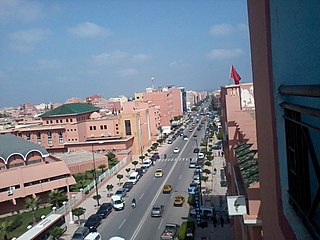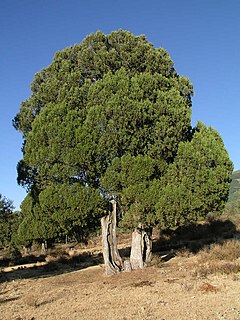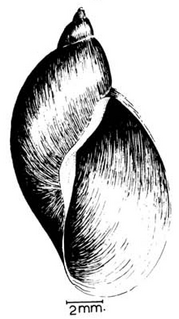
Cupressus dupreziana, the Saharan cypress, or tarout, is a very rare coniferous tree native to the Tassili n'Ajjer mountains in the central Sahara desert, southeast Algeria, where it forms a unique population of trees hundreds of kilometres from any other trees. There are only 233 specimens of this endangered species, the largest about 22 m tall. The majority are estimated to be over 2000 years old, with very little regeneration due to the increasing desertification of the Sahara. Rainfall totals in the area are estimated to be about 30 mm annually. The largest one is named Tin-Balalan is believed to be the oldest tarout tree with a circumference of 12 meters or 36 feet.

Cupressus atlantica, the Moroccan cypress, is a rare coniferous tree endemic to the valley of the Oued n'Fiss river in the High Atlas Mountains south of Marrakech in western Morocco. The majority are old, with very little regeneration due to overgrazing by goats, and they are critically endangered.

Beni Mellal is a city in north-central Morocco. It is the capital of the Béni Mellal-Khénifra Region and has a population of 192,676. It sits at the foot of Jbel Tassemit (2247m), and next to the plains of Beni Amir.

Juniperus thurifera is a species of juniper native to the mountains of the western Mediterranean region, from southern France across eastern and central Spain to Morocco and locally in northern Algeria.

Gyraulus is a genus of small, mostly air-breathing, freshwater snails, aquatic pulmonate gastropod mollusks in the family Planorbidae, the ram's horn snails.

The North African fire salamander is a species of salamander in the family Salamandridae found in Algeria, Morocco, Spain, and possibly Tunisia. Its natural habitats are temperate forests, rivers, and caves. It is threatened by habitat loss.

The Sahara frog is a species of frog in the family Ranidae. It is native to Egypt, Libya, Tunisia, Algeria, Morocco, Spanish North Africa, and Western Sahara; it has also been introduced to Gran Canaria. In French it is called grenouille verte d'Afrique du Nord, and in Spanish it is known as rana verde norteafricana.

Timon tangitanus, commonly known as the Moroccan eyed lizard, is a species of lizard in the family Lacertidae. The species is endemic to Northwest Africa.

Ferrissia is a genus of small, air-breathing freshwater limpets, aquatic gastropod mollusks in the family Planorbidae, the ram's horn snails and their allies.

Melanopsis is a genus of freshwater snails with a gill and an operculum, aquatic gastropod mollusks in the family Melanopsidae.

Theodoxus is a genus of nerites, small water snails with an operculum, some of which live in freshwater, and some in both freshwater and brackish water, aquatic gastropod mollusks in the family Neritidae, the nerites.

Melanopsidae, common name melanopsids, is a family of freshwater gastropods in the clade Sorbeoconcha. Species in this family are native to southern and eastern Europe, northern Africa, parts of the Middle East, New Zealand, and freshwater streams of some large South Pacific islands.

Mercuria is a genus of small brackish water snails or freshwater snails with a gill and an operculum, aquatic gastropod mollusks in the family Hydrobiidae.

Paludomidae, common name paludomids, is a family of freshwater snails, gastropod molluscs in the clade Sorbeoconcha.

Radix natalensis is a species of freshwater snail, an aquatic gastropod mollusc in the family Lymnaeidae.

Forthassa Gharbia is a small settlement in western Algeria near the Moroccan border, to the west of Aïn Séfra. During the French colonial era it was important as a military post.
Melanopsis magnifica is a species of freshwater gastropod endemic to oases and wadis in Morocco.
Melanopsis brevicula is a small species of gastropod endemic to small streams near Agourai, Morocco. It is distinctive due to its minute size, flattened sculpture, low spire, and small aperture. It is known from a single location 10 km2 in area which has been well surveyed, and found to be threatened by increasing human population, droughts of increasing extremity, water diversion, and pastoralization. Shell collecting presents a minor threat to populations. The species has been classified as Critically endangered by the IUCN.















